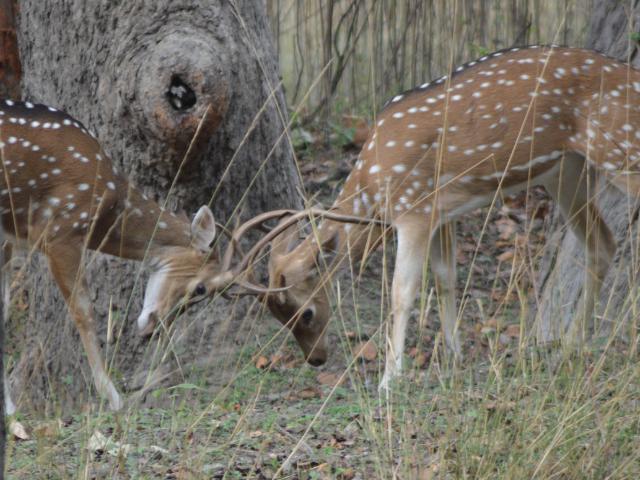Barely a week before Bandhavgarh national park closed down in June for three months, a large number of wildlife lovers visited the park. Many of them returned disappointed as there was no tiger sighting while asmall number of visitors was still lucky to have some wonderful “chanced sighting “of the big cat. Like the one in Tala range. Barely a week before Bandhavgarh national park closed down in June for three months, a large number of wildlife lovers visited the park. as she took mud bath for a while amd also quenched thirst before proceeding to meet her four 5-month old cubs hidden in a cave deep in the jungle. Rare tiger sighting happens during the monsoon when plenty of water is available in every nook and corner of the jungle and the green forest cover revives after a few showers diminishing the chances of tiger sighting even if it is sitting very close in the bushes.But the showers have left a magical touch in the jungle.
Jungle Make Over
Also read: Tiger Takes Rest After Months Of Tourism Stress
“It was the only opportunity of tiger sighting that day in Magadhi zone”, said a gypsy driver. But there are many who enjoyed some marvelous jungle moments like young spotted deer crossing antlers. In fact, deer are enjoying the fresh bamboo shoots and can be seen munching the green leaves in herds of 50 or 60.Friends forever, monkeyswould always accompany them. Together they keep an eye on the presence of tigersaround. Though still awaiting heavy showers, Bandhavgarh cliffs are getting greener and greener. Prospering with high and thick Sal forests, the entire jungle brings a blissful aroma to the surroundings.
Plenty Of Other wildlife
Those who have been visiting the national parks for the past many years may have noticed the variety of people visiting the jungles these days. Many of them are equipped with cannon like camera lenses. Donning the jungle wear, many of them try to produce wildlife vlogs following the Discovery and the National Geographic channels. Wildlife tourism is a costly affair.Only two jungle safaris in a day cost more than Rs 12000. As the cost of visiting parks go on increasing, it is fast going beyond the reach of the Indian middle -class.
Also read: Why Incredible Tiger Images Keep Coming From Ranthambore ?
This is besides the boarding and lodging cost of the hotel or resort. And whenyou don’t get to see a tiger, it is even more disappointing. Though there is plenty of wildlife in the park. This time around the frequency of the sighting of slithering monitor lizards and mongoose was more. There are also good sightings of Gaur or Indian Bison. The powerful herbivores were translocatedin 2011 from Kanha national park. After shutting down on June 30, the park opens again on October 1. However, some part of buffer zones of all the national parks in Madhya Pradesh would remain open through out the monsoon.
Pics: Deshdeep Saxena




Comments
Post a Comment